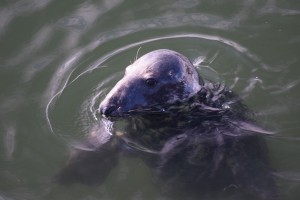Marine
Trialling methods for tracking marine mammals
June 16, 2016 by Marine Scotland Communications 2 Comments | Category Marine Directorate general, Marine Directorate Science
 As part of the process for developing wave and tidal renewable energy generation in Scottish Waters, a Strategic Environmental Assessment (SEA) has to be completed, evaluating the potential interactions between marine renewables and marine wildlife as a matter of priority. Despite significant progress in the industry over recent years, there remains a great deal of uncertainty about the risk that tidal turbines in particular pose to marine mammals.
As part of the process for developing wave and tidal renewable energy generation in Scottish Waters, a Strategic Environmental Assessment (SEA) has to be completed, evaluating the potential interactions between marine renewables and marine wildlife as a matter of priority. Despite significant progress in the industry over recent years, there remains a great deal of uncertainty about the risk that tidal turbines in particular pose to marine mammals.
To improve our understanding of how animals perceive and respond to devices, the Scottish Government funded a research project to test and deploy methods for tracking the fine scale underwater movements of marine mammals in the vicinity of operating marine tidal energy devices. The Sea Mammal Research Unit (SMRU), based at the University of St Andrews carried out this research over an 18 month period starting in summer 2014.
This research was the first phase of a wider project to track marine mammals around tidal turbines, and had the primary aim of developing and testing the capabilities of a suite of technologies used for detecting collisions or localised avoidance/displacement behaviour of marine mammals within an operational tidal array. This project produced an integrated Passive Acoustic Monitoring (PAM), Active Acoustic Monitoring (AAM), and underwater video system to track animals in 3D with a high spatial and temporal resolution.
Key outcomes of the research include:
- A review of appropriate platforms for deploying monitoring equipment close to the tidal turbines
- A developed PAM system that is reliable and capable of detecting and tracking harbour porpoise and bottlenose dolphin clicks in 3D
- A technique to track marine mammals in 3D in a tidally energetic environments using dual sonars
- An efficient algorithm to classify marine mammals in sonar data
- An AAM system that can successfully detect and track seals in tidally energetic environments
- A fixed seabed mounted platform with AAM and PAM systems that was successfully deployed and detected marine mammals over a period of several weeks.The next phase of this project will be the deployment of the hardware and software around the first commercial tidal project in Scottish waters. This will provide a tailored system for understanding the behaviour of marine mammals around operating tidal turbines and will enable data to be collected that will refine estimates of collision risk.
Further Information


Hi Pippa. I’ve spoken with one of the team involved in the research and she has said that the fundamental frequency of the sonar that used in the current study was well above the effective hearing range of marine mammals. Recordings that were done of the sonar signal indicate that there is little overlap with the lower frequencies that make up the hearing range of marine mammals, suggesting that the risks of this sonar system causing any changes in behaviour are low.
And how do marine mammals react to the tracking system?